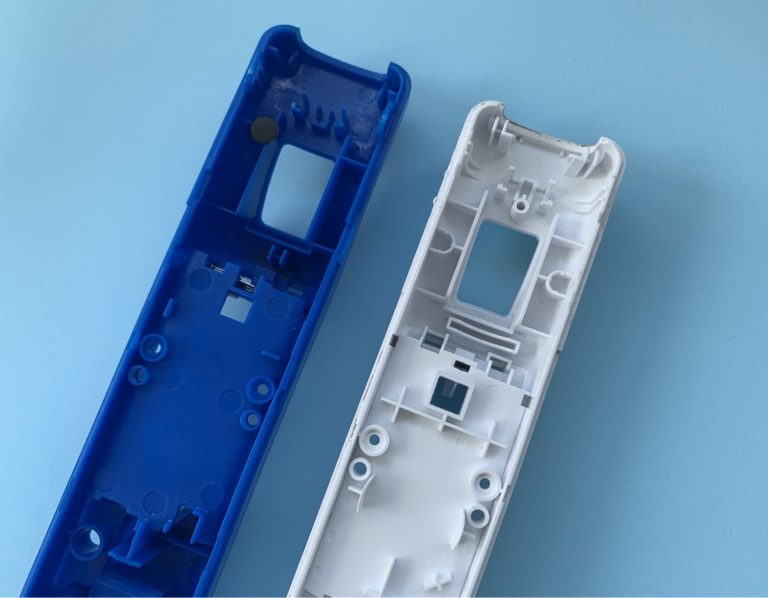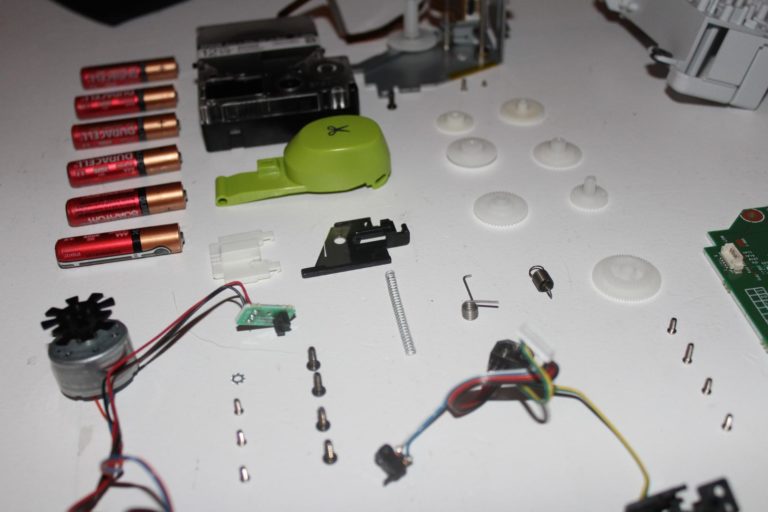Here’s the final piece of Under Armour’s technological trifecta: the Under Armour Band! That’s right, to rival Nike Fuelband and Fitbit, Under Armour has come out with a wearable of its own.
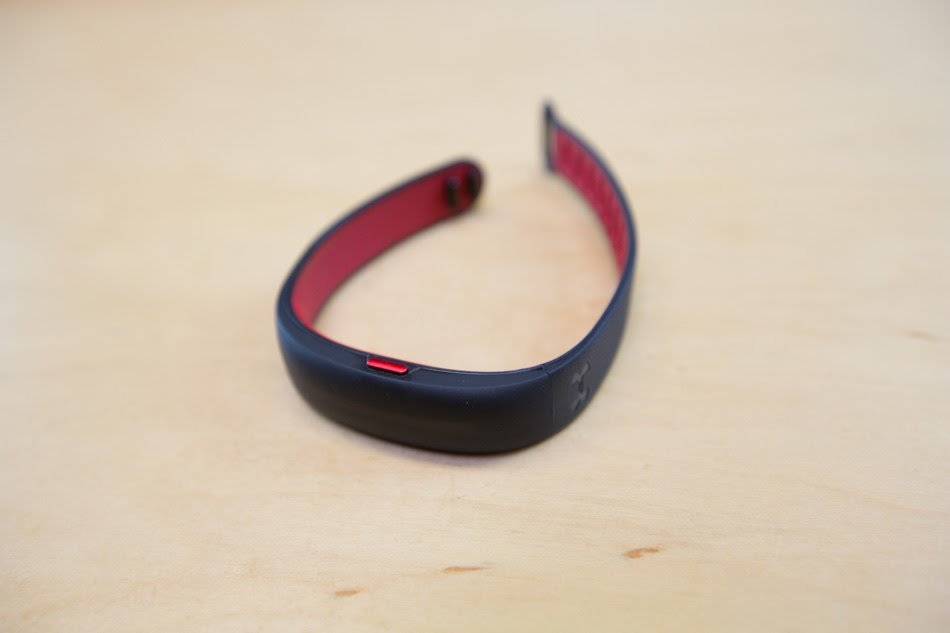
Sleek and sporty, the band can measure heart rate, hours of sleep, and activity. In addition to counting steps and keeping time, it also can control music and relay text messages via Bluetooth. However, only three to four words of each text are displayed at a time, so I found myself constantly swiping to the right to read text messages on the tiny screen. I noticed my coworkers giving me funny glances… I guess I was swiping right quite frequently!
As much as I enjoyed having the band vibrate every hour to remind me how lazy I am and that I should do something active, it notified me one too many times, and all I wanted to do was tear it down. Good thing that’s my job.
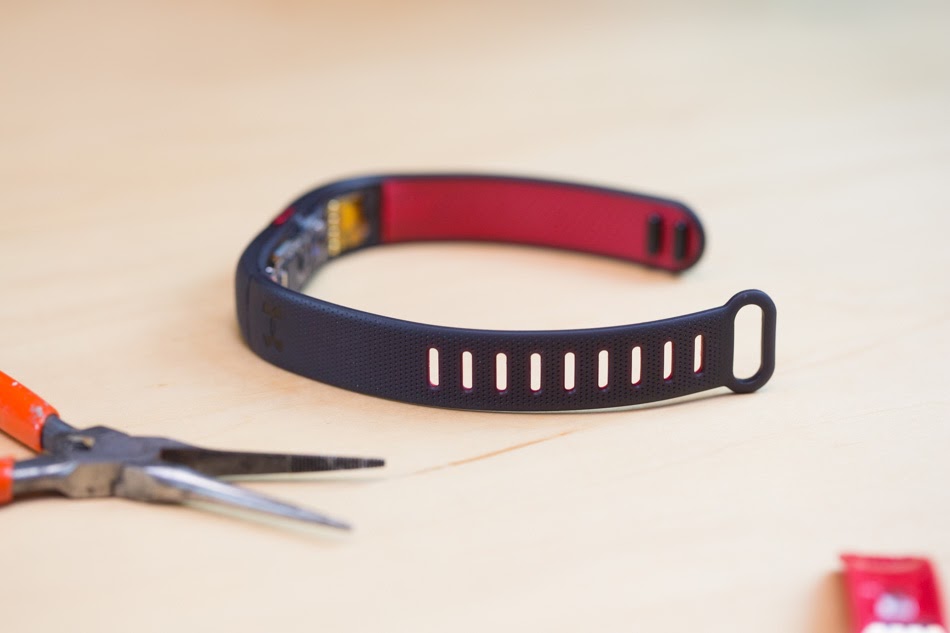
The flexible strap component is made of TPU. I began by bending the band inside out and popping off the bottom cover. It came off very easily—it looks like it was simply glued in.
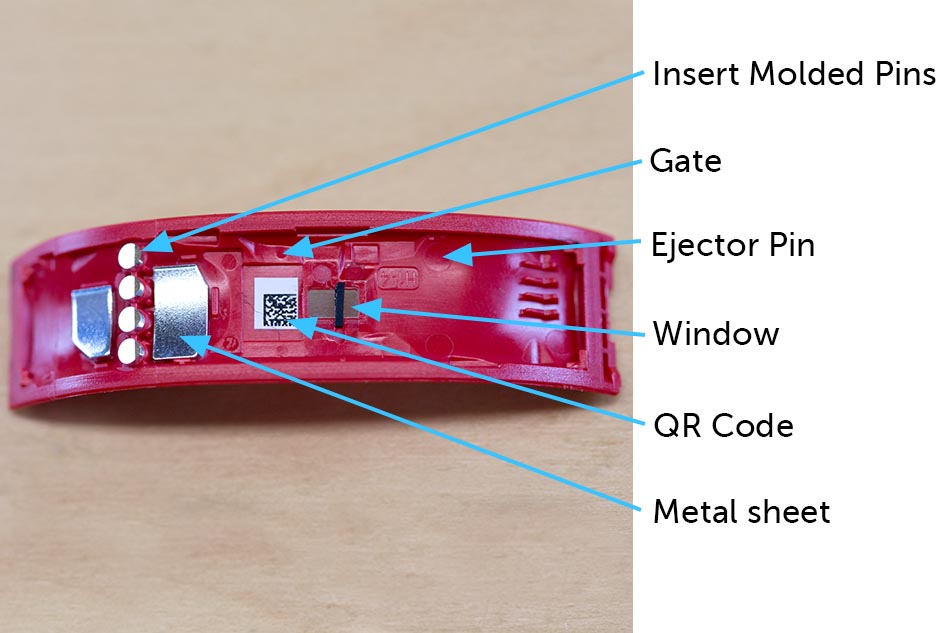
On the bottom panel, we see the usual signs, the gate and ejector pin marks that point to injection molded plastics; the UA band’s tech spec tells us the back cover is made of polycarbonate. Other features of note are a transparent window for heart rate measurement, metal sheets to provide a magnetic connection to the charger, and four insert molded pins that act as leads for charging the battery. There’s also a QR code in the center, for tracking sub-assemblies on the assembly line.
Let’s continue with the rest of the band and the internal components, which are very neatly laid out!
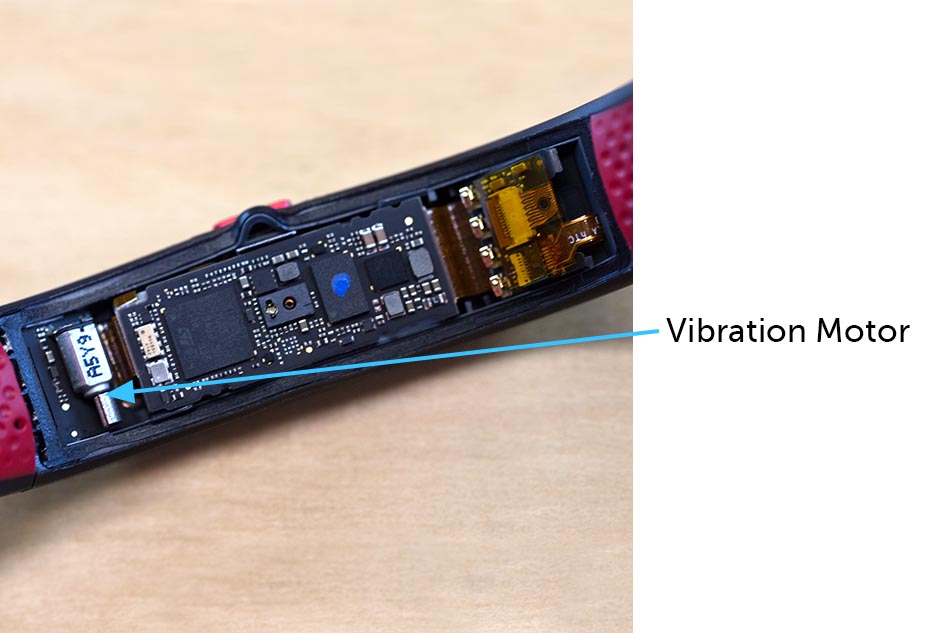
The first thing to point out is that metal cylinder on the left that’s responsible for all those activity notifications. It’s simply a DC motor with an offset mass, and spinning the shaft causes the vibration to which we’re accustomed. This motor is so small, its surface is soldered to the PCBA. Bigger motors that vibrate more strongly are usually attached to the product housing by screws. The other type of motor we commonly see for this application is pancake-shaped.
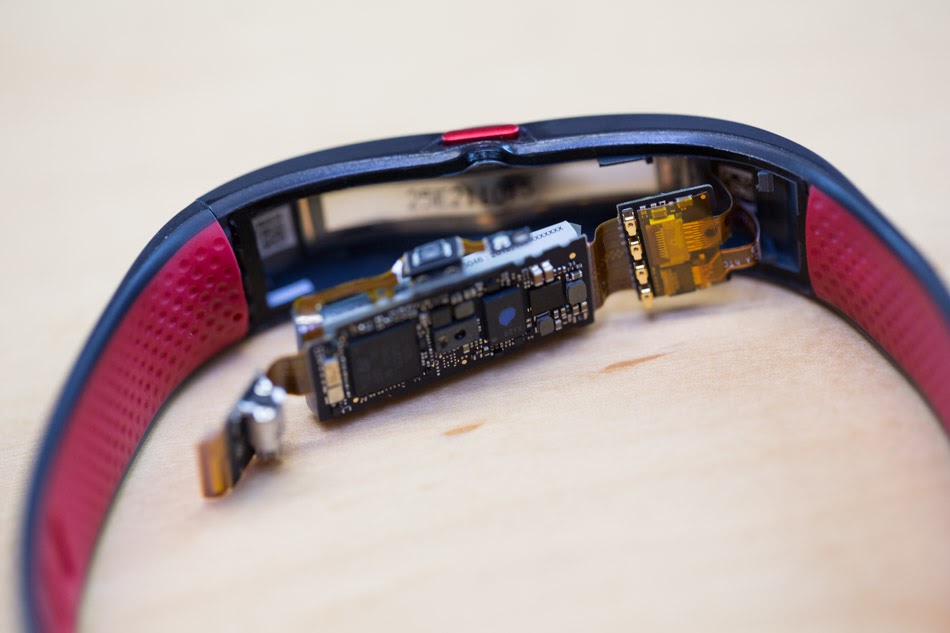
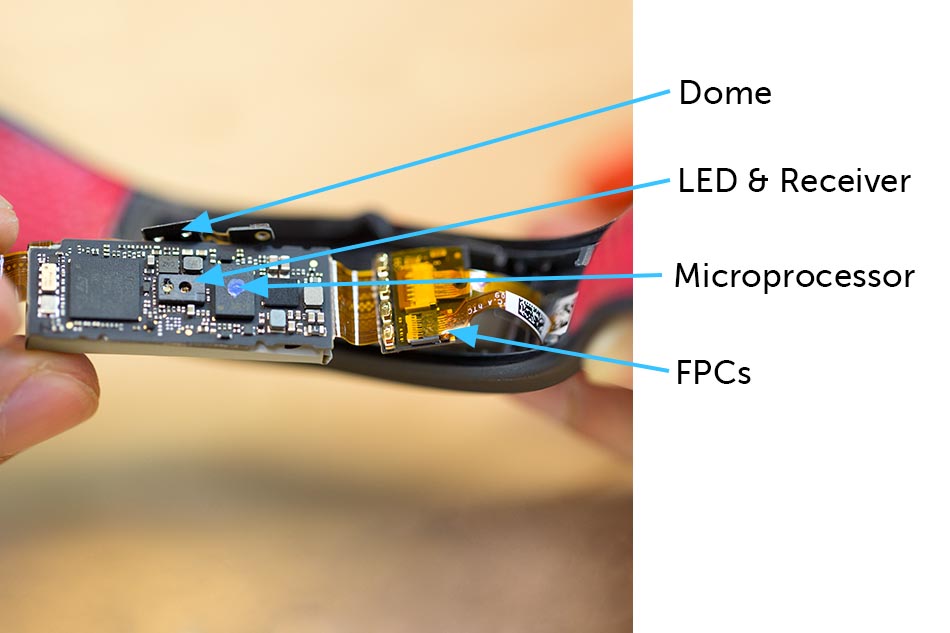
As you can see, the internal components have a wraparound design. The features on the PCBA include the microprocessor, an LED light and receiver to sense heart rate, and a metal dome switch under the power button. We also see FPCs (flexible printed circuits) that act as both circuit boards and connectors.
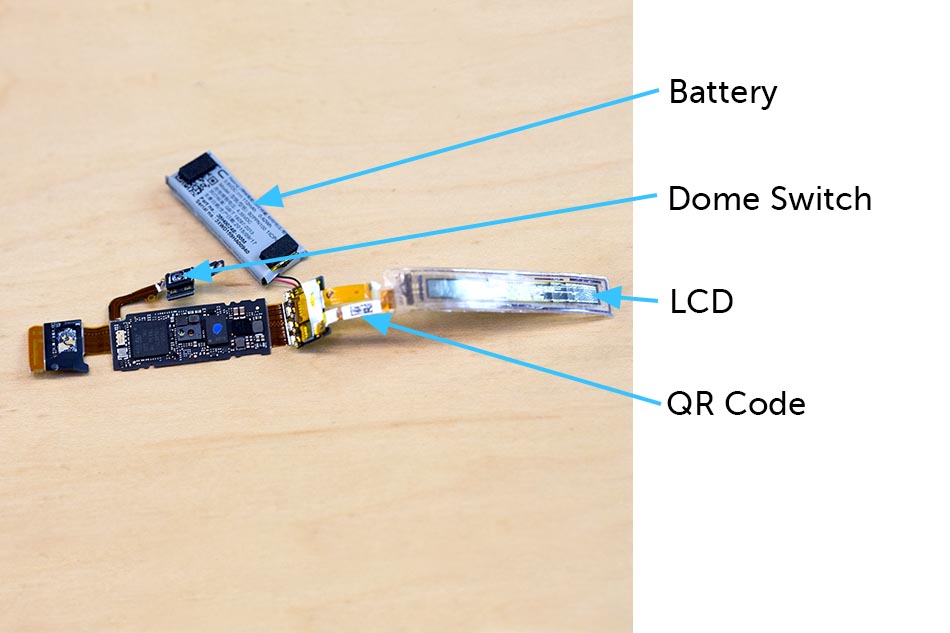
With the electronics laid out flat, we can see how the battery and LCD screen are attached. The battery has its own connectors and packaging—very nice! We really only expected some soldered leads. Here, we see another QR code—to ensure a trackable assembly process, so that nothing is lost on the assembly line.
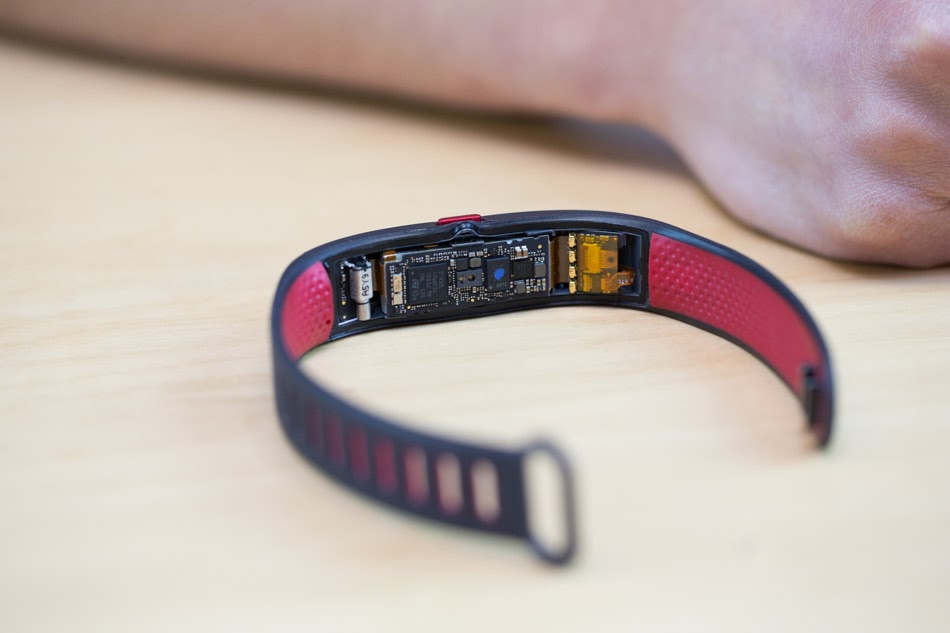
Under Armour’s health tracking band is a very nifty product: not just on the outside, with its minimalist and sporty design, but also on the inside, with refreshing design and component arrangement.
The fitness wearables trend is riding strong, and with so many players in the game and so many similarities in components and technology, Under Armour will need to position itself strategically in terms of marketing or niche. It appears that Under Armour, in keeping with its brand image, is targeting athletes and aspiring athletes with this product, so it will be interesting to see how the band competes in the market!









